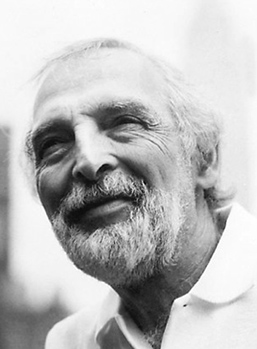
After WWII, the pharmaceutical industry experienced a research renaissance. Dozens of new, revolutionary drugs came on the market, many for previously untreatable conditions. This scientific flowering was accompanied by a comparable new direction in the creative content of Rx promotion. No one person represents this change in creative attitude more than Herb Lubalin, who came to Sudler & Hennessey (S&H) in 1945. He was just in time to catch and drive the wave of change.
In the ’30s and ’40s, pharmaceutical promotion had been an advertising backwater. Most ads simply presented the product’s indication as the headline, the drug’s packaging as the graphic, and the logo as the sign-off. But now, competition for attention among the flood of new brand names required much more. Remember, this was pre-Kefauver when all that was required to put a drug on the market was safety data, not clinical trials proving efficacy. The solution was to draw upon the talent of Madison Avenue for writers and designers who could provide the flash and impact for promotion as up-to-date as the “wonder drugs” being advertised. Lubalin, who had worked at consumer agencies after graduating from Cooper Union in 1939, was drawn to this opportunity. He was to spend more than 20 years at S&H, perfecting his style and design philosophy. By his example, the creative level of pharmaceutical promotion was raised.
Sudler & Hennessey was an ideal venue for Lubalin. Arthur Sudler, who was a great judge of talent, undoubtedly saw Lubalin’s ability and gave him the freedom to practice the new discipline of graphic design, which was coming to the fore. Sudler & Hennessey, then an art studio, was also the right place for Lubalin because of its specialization in print promotion. Lubalin’s passion was for print, particularly typography. The studio was producing hundreds of print pieces—ads, mailers, sample carriers, and collateral materials of all kinds. Lubalin had a copious volume of work on which to experiment and a workload in sync with his prodigious productive pace. At the height of his career at S&H, Lubalin was the creative engine driving the agency. His organizational method was to do rough pencil sketches for execution into finished layouts or “comps” by assistant art directors for transmittal to the client.
George Lois, the famous designer and agency founder who worked at S&H with Lubalin, describes him at work: “He had a talented staff. But he put a tremendous load on himself. He would have a pile of [work] requisitions on his desk this deep with a line of people out the door. He would write headlines, too…and do beautiful sketches and give it to them. And by God, if you looked at it, they were the jobs. They were all figured out. The man was brilliant.”
A great deal of the creative achievements of this period, which has been called the “Golden Age” of medical advertising, can be traced to Lubalin’s influence. His emphasis on fine typography, the use of top photographers and illustrators, and ads with an immediately communicative headline closely supported by a companion graphic, the essence of the poster style, came to be identified with the Rx industry. Additionally, the promotion of this era was marked by an unusually high level of taste, especially in design, and substantial credit for this dedication to quality visuals can be attributed to Lubalin’s work and his influence on the field.